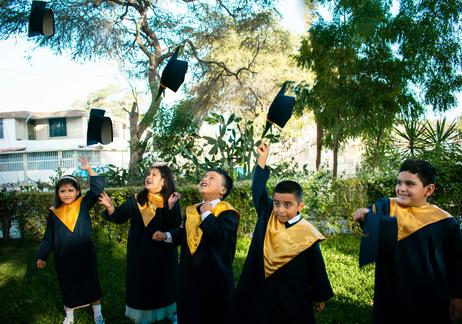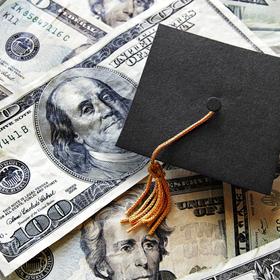Private School Scholarship & Financial Aid Options: Hidden Programs for Low-Income or Underrepresented Students in 2025
Affording private school can feel out of reach for many families, especially those from low-income or underrepresented communities. But in 2025, there are more hidden and lesser-known scholarship and financial-aid options than ever before — state programs, nonprofit initiatives, and private school mechanisms designed to help students who historically have had the least access. This article explores what those programs look like, where to find them, how eligibility generally works, and best strategies for applying.
Why Hidden Programs Matter
Many private schools offer financial aid, but much of it is under-advertised or simply difficult to navigate. Hidden scholarship programs can offer:
Substantial relief for families that exceed traditional poverty thresholds but still find private school unaffordable.
Aid for specific populations (e.g. students of color, those with unique learning needs, military families).
More flexible models (portable scholarships, vouchers, education savings accounts) that allow choosing schools rather than being tied to one institution.
As states and nonprofits expand school choice, tax-advantaged programs, and grants, awareness is the biggest barrier. The more parents, students, and educators know, the better.
Key Types of Financial Aid & Scholarship Programs in 2025
Here are the major categories of aid options for low-income or underrepresented students aiming at private schools:
| Type | What It Is | Examples & Updates in 2025 | Who It Typically Helps |
|---|---|---|---|
| State‐level Voucher / Choice Programs | State programs or education savings accounts (ESAs) give families public funds or tax credits to pay private school tuition or related expenses. | Georgia Promise Scholarship — re-opening applications in Oct 2025 for private school participation. (Georgia Promise Scholarship) Florida Family Empowerment / Unique Abilities Scholarship via Step Up For Students — scholarships for low-income and/or special-needs students. (Step Up For Students) | Students in states with enabling legislation; those who meet income, residency or special-needs criteria. |
| Nonprofit Scholarship Funds | Charitable organizations, foundations, or community groups that provide private school scholarships (often need-based or merit + need). | Children’s Scholarship Fund — for K-8 low-income students via local partners. (TSH Anywhere) The Village Scholarship (PSV) — in Greater Los Angeles for Black and Brown students from underserved households, with awards up to ~$10,000/year. (PSV) | Underrepresented students whose family incomes are below program thresholds; often geographically bound. |
| Sliding-Scale Tuition Assistance from Private Schools | Many private schools set aside funds to subsidize tuition for families within a certain income range, often with robust need-based aid. | According to PrivateSchoolVillage, income limits vary; many programs use sliding scales. A family of four earning under ~$75,000 might qualify, depending on school. (PSV) | Families that are somewhat above poverty level but still low income; often requires detailed documentation. |
| Special Needs / Disability Scholarships | Programs that direct funds toward students with unique learning or physical needs, to allow private school, therapies, or other services. | Florida Family Empowerment Scholarship for Unique Abilities — average scholarship ~$10,000; for higher-need students in 2025/26 up to ~$22,000–$34,000 depending on matrix score. (Step Up For Students) | Students whose needs are officially recognized and validated, often with assessments or diagnostic documentation. |
| Academic Merit + Underrepresented Identity Scholarships | Aid aimed at high-performing students who are also low income, from communities underrepresented in private education. | A Better Chance (ABC) — recruits high-achieving students of color into private or boarding schools; member schools offer financial aid. (TSH Anywhere) Many private schools list merit + need full scholarships in their aid portfolios. (PSV) | Students with strong grades/test scores or leadership; must also demonstrate financial need. |
Notable Programs & Updates in 2025
Here are several examples that illustrate how these hidden or newer programs are working in 2025:
Opportunity Scholarship (North Carolina): Awards of ~$3,000 to ~$7,000 for families seeking private school tuition and fees. Open to K-12 students.
Georgia Promise Scholarship: Private school applications for 2025-26 are open October 1–31, 2025. Schools must meet certain accreditation & reporting requirements.
The Village Scholarship (PSV, Greater LA): Offers up to $10,000/year; started small in 2024-25 and expanding for 2025-26; targeted at Black, Brown, and underserved students.
Florida Unique Abilities Scholarship: For students with disabilities or special learning needs; generous ceilings in higher-need cases.
Eligibility: What Criteria Often Apply
To access these hidden and under-advertised programs, students/families usually need to meet several (but not always all) of the following:
Household income below a certain threshold (often tied to Free/Reduced Lunch levels, or 200-300% of the Federal Poverty Level).
Residency in a specific state, district, or geographic area.
Student status: often entering certain grades (e.g. K-8 or high school), or moving from public to private school.
Demonstrated need: income documentation, tax returns, etc.
Sometimes academic standards or promise (e.g. minimum grades, test scores, leadership).
For special needs scholarships: formal evaluations or documentation of disability or learning differences.
Sometimes demographic identifiers (race, ethnicity, military family, underrepresented groups) are part of eligibility.
Pros & Challenges
| Advantage | Challenge or Caveat |
|---|---|
| Provides real access to private schooling for families who might otherwise be excluded. | Many programs do not cover full tuition; gaps remain. |
| Often more flexible in terms of what the funds can cover (textbooks, therapies, fees). | Application windows can be short or odd; documentation requirements burdensome. |
| Encourages diversity in private schools; underrepresented students gain access. | Schools must be participating in the programs; not all private schools accept vouchers or grants. |
| New models (portable scholarships, ESAs, outside-organization grants) offer more stability and flexibility. | Funding is sometimes unstable, subject to budget cuts or political shifts. |
How to Find Hidden Aid: A Checklist for Parents & Students
To uncover programs your family might qualify for, try the following:
- Start with your state education agency — many states now list programs for private school vouchers, ESAs, and special-needs scholarships.
- Contact private schools directly — ask their financial aid office about both internal aid and knowledge of external scholarships in your area.
- Search nonprofit & community organizations — foundations, faith-based groups, civic institutions often have under-advertised funds.
- Monitor school choice / voucher legislation — in many states, new laws are enacted every few years which open new channels.
- Use scholarship search tools — databases like Scholarships360, local “children’s scholarship funds,” or even school fairness coalitions.
- Don’t delay — applying early can increase your chances; some funds are awarded on a rolling basis.
Expert Commentary
According to financial aid professionals, two trends are especially worth noting in 2025:
Expanding Education Savings Account (ESA) Models: More states are using ESAs or scholarship accounts, which allow families to manage funds more flexibly (tuition, fees, therapies). This shift helps underrepresented students who might need more than just tuition assistance.
Targeted Scholarship Pilots for Diversity and Underserved Communities: Programs like The Village Scholarship in LA are designed not just to help low income, but to explicitly support students of specific underserved populations. These pilots often become models for wider adoption.
Greater Transparency & Simpler Application Processes: Schools and nonprofits are being pushed to simplify documentation and make eligibility criteria more visible. There is a growing recognition: hidden aid only helps if people can find it and apply for it.
Real-World Example: Comparing Two Students
| Student Profile | Program Match | Potential Aid | Key Steps to Maximize Success |
|---|---|---|---|
| Aaliyah: 7th grade, family income $50,000, lives in North Carolina | Opportunity Scholarship (NC) | ~$5,000 toward tuition/fees at a participating private school. | Apply before September deadline; ensure school is “registered”; prepare required income documents. |
| Miguel: 10th grade, special education needs, Florida resident | Unique Abilities Scholarship (Florida) | $15,000–$30,000 depending on need, matrix score, private school’s cost. | Obtain up-to-date assessments; apply during the open window; consider support services budget; choose a school that participates. |
What’s New & What to Watch for in Late 2025 / 2026
Several states are expanding voucher / ESA programs, especially for students with special needs or in underperforming school zones.
Nonprofits and private organizations are launching pilot portable scholarship programs that follow students rather than being tied to a specific school. These may become more common.
Lawmakers and advocacy groups are pushing for higher income caps or sliding scale models so that low-middle income families aren’t excluded.
Tips for Applying Successfully
Begin early: many programs operate on tight or non-traditional schedules.
Gather documentation: income, residency, diagnostic reports (if applicable).
Seek help: schools, community organizations, even current scholarship recipients may assist.
Understand the difference between full and partial scholarships; clarify what costs aid will cover.
If rejected, ask for feedback and whether you can reapply or appeal.
Conclusion
In 2025, there are more hidden scholarship and financial aid programs for private schools than many families realize. For low-income and underrepresented students, these options can turn what seems unaffordable into a manageable, even transformative opportunity. Awareness, persistence, and targeting the right programs are key to unlocking this access.
With the expansion of ESAs, special-needs aid, and diversity-centered scholarships, 2025 may be a breakthrough year. If you're considering private education, explore state programs, nonprofit scholarships, and your school’s aid packages now — the sooner you begin, the more options you’ll discover.







-4c3194pi4wis8gsg004w0g44w-280.jpg)






